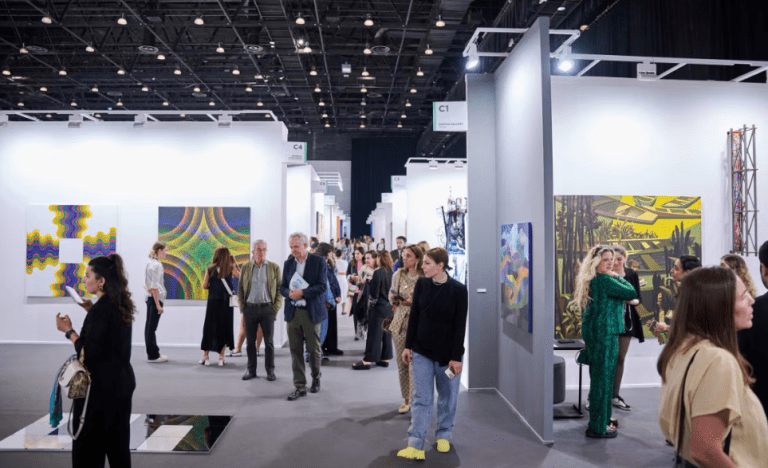By Omar Gouda
A wave of ArtTech innovation is reshaping access to art across our region. A new generation of founders is dismantling long-standing barriers by integrating technology, design, and alternative business models. These startups are expanding how art is discovered, acquired, shared, and financed, opening the market to broader regional and global audiences.
Breaking the Ivory Tower
The MENA art market has long been shaped by exclusive galleries, private showings, and non-transparent pricing conditions that discouraged many potential collectors. Digital platforms are now challenging that model, offering broader access and greater transparency.
Founded in 2014 by Nikki Meftah and Dima Abdul Kader, Emergeast positioned itself as the first online gallery dedicated to emerging and mid-career artists from the MENA region. The founders set out with a clear goal: to make Middle Eastern art accessible to young, urban collectors priced out of traditional markets.

When COVID lockdowns hit, Emergeast leaned into digital storytelling, rolling out virtual studio tours and personalized online consultations to keep art lovers connected.
Another player, Artscoops, made its mark by connecting with younger collectors and offering a relaxed, user-friendly alternative to the traditional gallery scene. Co-founder Raya Mamarbachi says the idea was simple: take the pressure out of art buying. Thanks to their model, people who might never walk into a gallery can now browse and buy art from the comfort of home.

Another platform gaining traction is Artantix, as the UAE’s first fully digital art gallery, catering to both physical and digital pieces. It takes care of everything—from secure payments to doorstep delivery—so collectors can focus on the art itself. With its promise to “bring the art world to you anytime, anywhere,” the platform is opening doors for people who might not usually step into a gallery.
Collectively, these platforms are breaking down one of the art world’s toughest walls: exclusivity. Instead of relying on traditional gatekeepers, they use smart algorithms, compelling artist stories, and seamless digital interfaces to make art more accessible to everyone.
Logistics, Trust & Reach
Moving art from artist to buyer isn’t always simple; think shipping, customs, insurance, and packaging. But many ArtTech startups are stepping in to handle those hassles as part of their core offering.
Artantix, for example, works directly with artists to manage shipping and logistics, ensuring buyers get their pieces smoothly and securely. Emergeast has also built partnerships to guarantee quality and trust across its digital platform.
These platforms are helping bridge the region’s fragmented art landscape. MENA isn’t a single market—artists in places like Morocco, Sudan, or Yemen often face hurdles reaching buyers in the UAE or Europe. Online marketplaces offer a solution by centralizing visibility and curating content with consistency. Artscoops, for instance, adds depth through interviews, exhibition news, and editorial features that help build context and spark a connection.
Why It Matters
At its core, MENA’s ArtTech movement is about more than just selling art. It’s about amplifying overlooked voices, supporting sustainable creative careers, and welcoming new types of collectors into the fold. When a student in Alexandria can scroll through a Sudanese artist’s portfolio and invest in a piece, it’s a sign that the art world is becoming more open, inclusive, and truly democratic.



